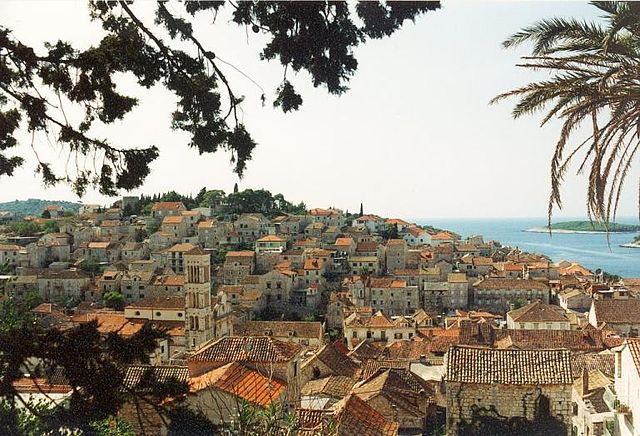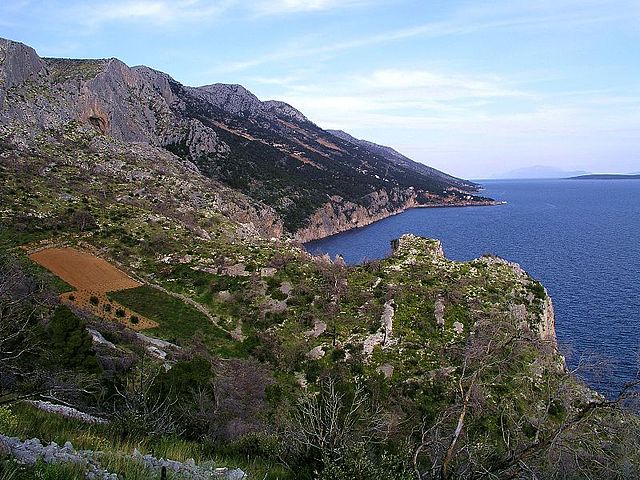The Hvar rebellion (1510–1514) was a popular uprising of the people and citizens of the Dalmatian island of Hvar on the Adriatic Sea against the island's nobility and their Venetian masters. It began on the island's largest city, also called Hvar, but spread to the entire island.
The city of Hvar, on the island bearing the same name.
Hvar is a Croatian island in the Adriatic Sea, located off the Dalmatian coast, lying between the islands of Brač, Vis and Korčula. Approximately 68 kilometres (42.25 mi) long, with a high east–west ridge of Mesozoic limestone and dolomite, the island of Hvar is unusual in the area for having a large fertile coastal plain, and fresh water springs. Its hillsides are covered in pine forests, with vineyards, olive groves, fruit orchards and lavender fields in the agricultural areas. The climate is characterized by mild winters, and warm summers with many hours of sunshine. The island has 10,678 residents according to the 2021 census, making it the 4th most populated of the Croatian islands.
A view of the town of Hvar from the fortress
Jagodna beach between the villages of Ivan Dolac and Sveta Nedilja
The southern coast of Hvar near Sveta Nedjelja
Spanish Fortress in Hvar town





